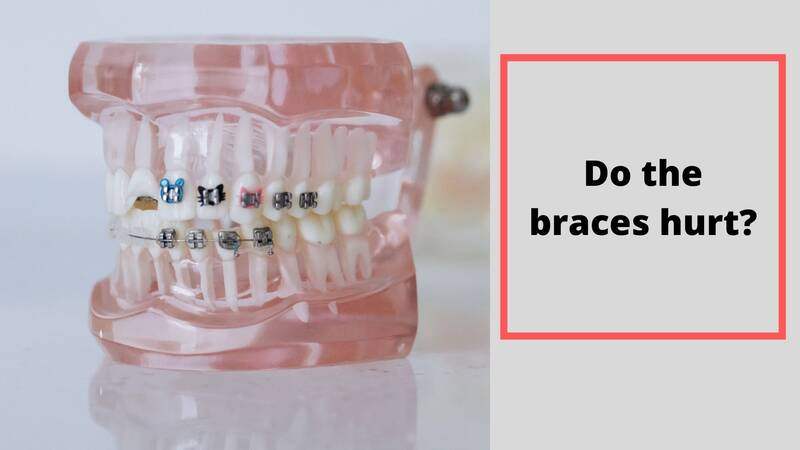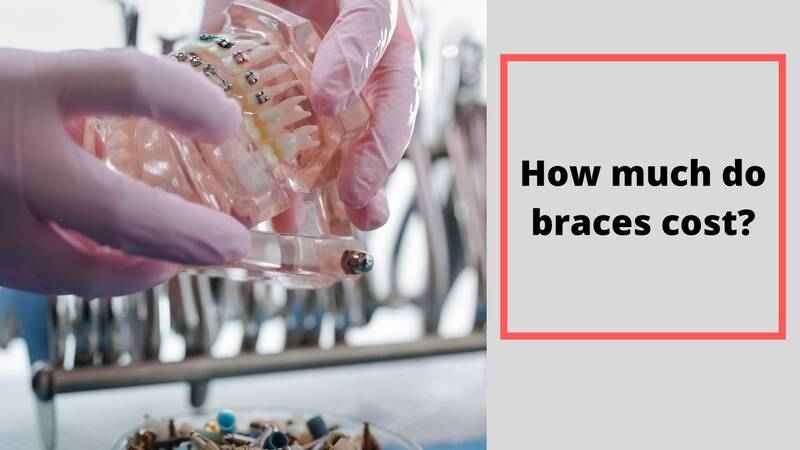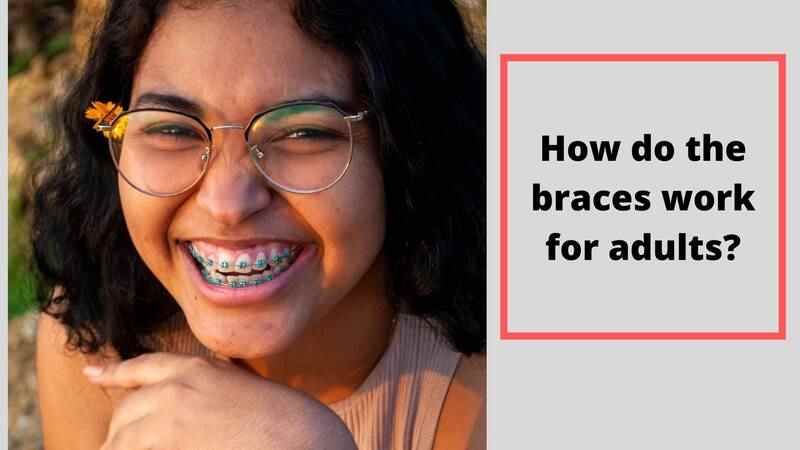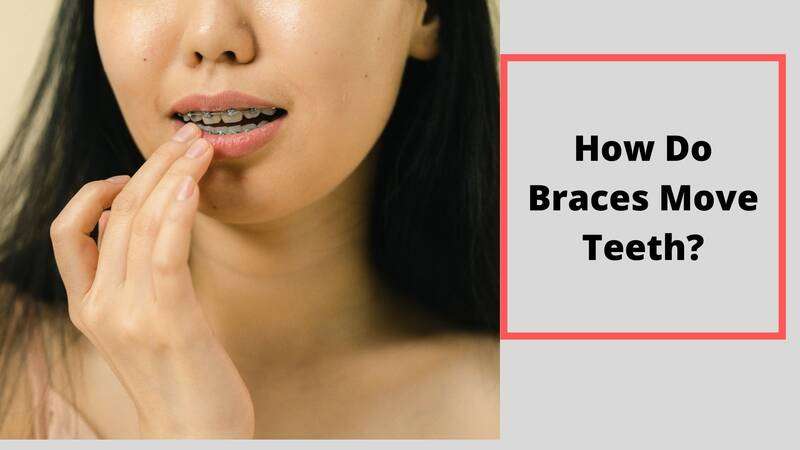The devices used for correcting overcrowded and crooked teeth, even a misaligned jaw is considered as malocclusion is achieved with the help of dental braces. So, how do braces move teeth?
Braces are mainly used in adolescence, but an increased number of adults get corrective dental braces in the latter part of their lives.
The metal, bonding material, and wires attaching to the teeth form the braces. The doctor specializing in this type of device and treatment for misaligned teeth is an orthodontist.
Success rates of braces vary as it depends on the age at the beginning of the treatment and the goals behind this treatment.
It is found that braces are highly effective for individuals using them. Still, their effectiveness depends mainly on a person and their ability to follow the instructions of their orthodontists.
Contents
How do braces move teeth?

Braces are noted to move your teeth by applying constant pressure on them for extended periods, and your jaw’s shape will conform to this pressure gradually.
We often think that our teeth are directly connected to our jawbone, making it tough to imagine how they should move.
Beneath the gums is a membrane surrounded by bones that root the teeth to your jaw.
The membrane is noted to control your teeth’s position, and it, therefore, responds to the pressure imposed on the teeth by the braces.
When you get the braces on
During the appointment, they do not hurt, and it takes between one to two hours to get installed.
You may even experience a certain amount of soreness when your braces get adjusted for the first week. Every time your doctor adjusts your braces, you may be sore for a few days.
Do the braces hurt?

You shouldn’t feel any discomfort when you’re getting braces put on.
They can be irritating in the days that follow the initial implantation.
Pain by braces is explained as a throbbing or a dull ache.
You can use medicines such as ibuprofen available over-the-counter if you have pain after getting braces.
Before taking any medicine just consult with your doctor.
Read– Why Does Listerine Burn?
How much do braces cost?

Health and dental insurance cover the braces for independent kids.
The coverage amount will depend on your provider and the cost of the services your doctor mentions required.
Typically, the braces for children often start around $5000 if you are paying from your pocket, as noted by the American Academy of Orthodontists.
Insurance does not cover adult braces and tray treatments such as Invisalign.
Adult braces are generally $5,000 to $7,000, and several orthodontists are offering payment plans to make this cost easily afforded.
Various types of braces in existence
Several factors determine the type of braces your orthodontist recommends, including your age and whether you have an overbite and crooked teeth.
The braces are custom-made that meet the needs of the individuals.
The classic braces come to mind for people as they are made out of metal brackets glued individually to your teeth.
The archwire imposes a lot of pressure on the jawline and teeth, and the elastic O-rings connect the archwire to the brackets.
This archwire is adjusted periodically as your teeth slowly move into their desired place with the elastic bands that switch out the appointments of the orthodontists.
The following are the other kinds of braces:
- clear ceramic braces that are hardly visible
- lingual braces are hidden fully behind your teeth
- aligner trays and invisible braces can be taken off being placed throughout the day
The retainers are aligner trays you are mainly given after completing the treatment, along with the traditional braces.
They are primarily used to keep your teeth in their new place.
Read– Why Does My Jaw Hurt?
How are the braces made?
The first step is to know these components while learning how braces move your teeth.
Braces need some moving parts for a successful movement, but the below-mentioned are important.
Brackets
Brackets are a visible portion of your braces as they are specifically made out of ceramic or metal materials.
They are bonded over every tooth surface to keep them in their place throughout the treatment.
Archwires
These are rod-like thin metal wires being placed over every bracket as they are important to create pressure against your teeth to move them through their optimal positions gradually.
O-Rings
These are smaller elastic bands noted as the ligature or ligature elastics.
They are mainly responsible for holding the bracket over the archwire.
O-rings are generally transformed at every appointment adjusted. There is a wide variety of colors to add a splash of fun to your smile.
These are the vital components that work together to exert constant pressure on teeth.
The pressure will gradually move them into the right positions over the entire treatment procedure.
Springs or rubber bands are often used for exerting a bit more force in specific directions.
Components of braces
Below we share some components of braces
Bracket adhesion
Ceramic, plastic, dry or stainless steel brackets are applied to your teeth using glue after they are dry and clean.
Applying the brackets to your teeth can be a bit uncomfortable, but it does not cause any pain.
The brackets can ensure that pressure is applied to your teeth evenly.
They are surrounded and connected using stainless steel wires, copper titanium, or nickel-titanium.
Bands
Once the brackets are on your teeth, elastic bands called O-rings or ligatures are inserted around them.
They increase the pressure on your jaw, as do most standard brace therapies.
Spacers
Rubber bands or metal rings are used as spacers.
During an appointment, your orthodontist may put them between your molars.
By creating room at the back of your mouth, spacers help move your jaw forward.
They also make room for braces if the back of your mouth is too narrow for them to fit properly.
Spacers aren’t required for everyone, and typically, they’re only worn for a week or two at a time.
Archwires
The brackets are connected to your teeth using archwires.
Pressure is imposed for your teeth to move into a place with this mechanism.
Stainless steel along with copper titanium or nickel-titanium is used for making archwires.
Buccal tube
Buccal tubes are metal components that attach to one of your molars.
The buccal tube connects the braces’ other components at the back of your mouth.
Several portions of your braces can then be tightened and released by your orthodontist.
Springs
On the archwire of your braces, coil springs are sometimes used.
They provide pressure to your teeth, pushing them apart and creating space.
Headgear for the face bow is uncommon, and it’s usually only worn at night.
When particular correction is required, headgear is a band that hooks your braces to apply extra pressure to your teeth.
Read– Why Does Mouthwash Burn
What do you understand by Mini-braces?
Traditional braces are larger than mini-braces.
Because they do not go around individual teeth, they take up less room in your mouth.
If you qualify for mini-braces, some orthodontists believe that they can shorten your treatment time.
Speak with your orthodontist if you’re unsure if you’re a candidate.
How fast can the braces work?
The length of treatment generally varies on each individual, but mainly people wear braces for about one to three years.
You can make sure that you wear your braces for the shortest time as you need to follow what your orthodontists say carefully.
Read– Essential Oil For Toothache
How do the braces work for adults?

You may wonder if you can obtain braces at any age.
However, there are some distinct advantages to beginning treatment earlier in life.
Your jawline and inherent tissue are still progressing as you mature into an adult as an adolescent.
Your jawline may be more flexible, and your teeth may be more receptive to movement.
Suppose your teeth adapt more readily to your braces, reducing treatment time.
There are a few changes that braces cannot make once your teeth and jaw have failed to develop.
When adults acquire braces, they have to go through the process as children.
When you’re an adult who desires braces, there are other factors to consider than the length of therapy.
If you consider a family expansion to conceive or are already pregnant, consult your OB-GYN about how braces can influence your pregnancy.
Consult your primary care physician if you have any prevailing underlying health conditions you are concerned about.
Read– Pacifier Teeth
How to maintain the braces?
Make sure to stay away from a few foods that can get trapped between the gum line and your braces after you get one. The following are the foods to avoid:
- hard candy
- popcorn
- chewing gum
If you wear braces, your teeth are more likely to trap foods that cause tooth decay.
So keep an eye on how often you ingest sugary drinks and starchy foods, which can erode tooth enamel.
Get an appointment with your doctor for 8 to 10 weeks while wearing braces.
Your orthodontist will examine you to ensure that you’re keeping good dental hygiene and properly caring for your braces.
When necessary, your orthodontist will replace the O-rings.
Read– Do Cavity Filling Hurt?
Clean your teeth with braces
When you have braces, it’s vital to pay attention to your oral hygiene.
Food will not become lodged beneath your braces and teeth if you brush after each meal.
Flossing around the braces twice a day will be possible thanks to special floss provided by the orthodontist.
You may decide to invest in a Waterpik flosser, which can easily traverse around your braces and access hard-to-reach spots.
Cleaning underneath and surrounding archwires and brackets can be done using a special instrument called an interdental toothbrush.
Read– Black Spot On Tooth
FAQs
Below we share some FAQs related to the question “How Do Braces Move Teeth”.
1. How do braces work to reposition your teeth?
Braces will begin to influence your teeth once they have been installed.
On one side, the periodontal membrane is stretched, while on the other, it is compressed, loosening the tooth slightly.
The tooth is then supported by a new bone that grows in.
Bone remodeling is what happens here, where the magic happens!
2. Do your braces move your teeth daily?
The short answer to whether braces move your jaw daily is yes.
Braces will begin to influence your teeth once they have been installed.
On one side, the periodontal membrane is stretched, while on the other, it is compressed, loosening the tooth slightly.
The tooth is then supported by a new bone that grows in.
Bone remodeling is what happens here, where the magic happens!
3. How quickly do braces shift teeth?
Around two months into the treatment, you should notice some notable movement.
Some individuals notice it much sooner than others, and it could happen as quickly as four weeks after you begin wearing aligners.
4. Do braces have the ability to move teeth up?
Both instances may necessitate top and bottom tooth movement.
Upper front teeth can move up, lower front teeth can move down, or a combination of the two is used to correct the overbite, or the lower back teeth can rise to allow the lower jaw to swing open slightly.
5. Do braces alter the shape of your face?
We’re frequently asked if braces can change the contour of your entire face in addition to your teeth.
So, can braces modify the shape of your face? Yes, they can, in a nutshell.
6. How long have you been putting up with braces?
You should only anticipate wearing your braces for a maximum of three years.
While this may be an excessively long period with metal on your teeth, keep in mind that this is the worst-case scenario.
Two years, give or take, is an even more accurate estimate of how long your braces will last.
7. Is it possible to get braces in three months?
Braces are worn for as little as a few months to correct a simple crooked tooth or spacing issue, up to 36 months for both metal and ceramic braces.
8. What are the last phases of braces treatment?
The retention phase is the third and last phase of orthodontic treatment.
This phase begins when the teeth have migrated into the desired position and the dental appliance is no longer used.
9. Do braces weaken the roots of the teeth?
However, it is widely accepted that a tooth can lose up to half of its root length and still function normally.
Root resorption is a common adverse effect of orthodontic therapy.
Hundreds of instances are treated the same way with no problems, while a few cases may have evident root shortening.
10. Do Braces Change Your Lips and Make Them Look Bigger?
Yes, braces will shift the placement of your lips, but only to the extent that the teeth are directly behind the shift.
And, it has nothing to do with braces modifying the fullness or contour of your lips.
Final Takeaway
So, how do braces move teeth? Braces specifically work by exerting pressure on your jawline to change the way your smile appears.
Having a properly aligned jaw and straight teeth will impact your look and your entire health.
Braces work slowly with the treatment that varies for every individual. Consult your dentist if you wish to find out more about getting braces!
Read– Black Tartar On Teeth
- Understanding HIPAA Compliance: Obligations for Covered Entities and Business Associates - April 23, 2024
- Things to Invest in for the Easter Season in 2024 - March 29, 2024
- Why Experience Matters: Finding An Established Dental Implants Provider - March 29, 2024
